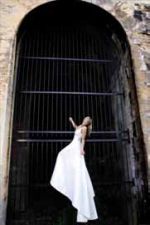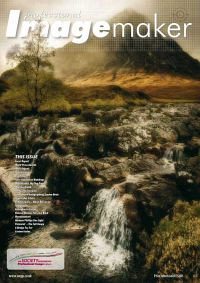articles/Weddings/wantweddingphotographer-page3
So You Want to be a Wedding Photographer? - part 3 of 1 2 3
by Terry Hewlett Published 01/04/2010

Now there is a great deal more to shooting a wedding than just a few hours' work on the day. So let's assume you have already considered insurance (professional indemnity and public liability), equipment, including back-ups when technology fails, the couple's expectations of you, and yours of them, the church and reception venue. You have discussed all the details and timings with the bride, established all the 'must have' shots, considered what images and poses you want to achieve and checked where the sun will be - assuming it will be shining. In addition, you will check timings to the church or bride's home and also routes between the church and venue should there be road closures, and check with the vicar, priest or registrar what is allowed or not allowed during the day, for example, can you shoot during the service?
So OK, you now have everything in place to be able to at least control and manage the day, all you have to do now is take the photographs and work with the following people (in no particular order) - people who have: round faces, balding and shiny heads (like me), large noses, big ears, spectacles, high cheek bones. People who are exhibitionists, fat, thin, have double chins, etc, along with brides who think they fit comfortably into their dress, and finally, the extroverts.
Your preparation for the wedding will have started many months, if not years before, however, there are three key elements that will help to make your day successful: Planning, Preparation and Lighting Control.
Whether it's harsh or uneven sunlight, the black of night, wind, rain or heat, the photographer covering the wedding often has a critical set of challenges that must be overcome - or used creatively to their advantage.
We all know that midday light has the potential of creating harsh shadows and dark rings under eyes. So we place the couple in the shade of a tree, and the dappled light, created by sunlight filtering through the branches of a tree, creates even more challenges for the photographer. Harsh light is the biggest challenge, depending on the time of day. Figuring out where to position yourself, and where your subjects are going to be looking, is critical for great photos.
All that said, direct sunlight also enables creative possibilities, creating fantastic shadow patterns.
Then there's the rain, the bane of any outdoor event, other than marathon runners and ducks. Rain is one condition that absolutely must be planned for. And yet, when it does arrive, I have seen many photographers scratch their heads and complain because they have not planned a back-up shoot location. Extreme conditions can be exciting. For example, wind can actually be good, (not for the hair or mum's hat) but for blowing the bride's veil, providing a striking shot. These conditions can, if used correctly, help break any unnecessary tension and create untraditional images. Rain can produce creative opportunities.
No matter what genre of photography you create, light is fundamental; without it we would not be able to capture those stunning images. When in the studio the lighting is controllable - its direction, intensity, quality or colour, however, at a wedding we are confronted with what nature conspires and contrives to give us on the day, and, with most weddings, at a time of day that may be far from ideal. Controlling this light is fundamental to our craft and is provided by nature in many forms - hard, soft, diffused, warm or cool.
Top wedding photographers have their technique down to such a fine art that fellow professionals frequently find it impossible to accept that their images were really produced on the day. Stable technique makes life easier and keeps the results consistent. Experienced photographers don't tend to shift from reflectors one minute to fill-in flash the next - they can then spend more time on the details, not the basics.
The moral is to be consistent. In other words if you only concentrate on one technique outdoors and another one indoors, you will quickly be able to do both consistently well. This means the process becomes automatic and time can be spent on improving other areas such as posing, cropping and composition instead.
I have only touched upon a very small element of what goes to make a wedding photographer; we have not touched upon the quality and colour of light for example, and after all, shooting the wedding is only half the story, you now have to produce either the prints or, more often than not, the album.
Please Note:
There is more than one page for this Article.
You are currently on page 3
- So You Want to be a Wedding Photographer? page 1
- So You Want to be a Wedding Photographer? page 2
- So You Want to be a Wedding Photographer? page 3
1st Published 01/04/2010
last update 09/12/2022 15:00:11
More Weddings Articles
There are 37 days to get ready for The Society of Photographers Convention and Trade Show at The Novotel London West, Hammersmith ...
which starts on Wednesday 14th January 2026





